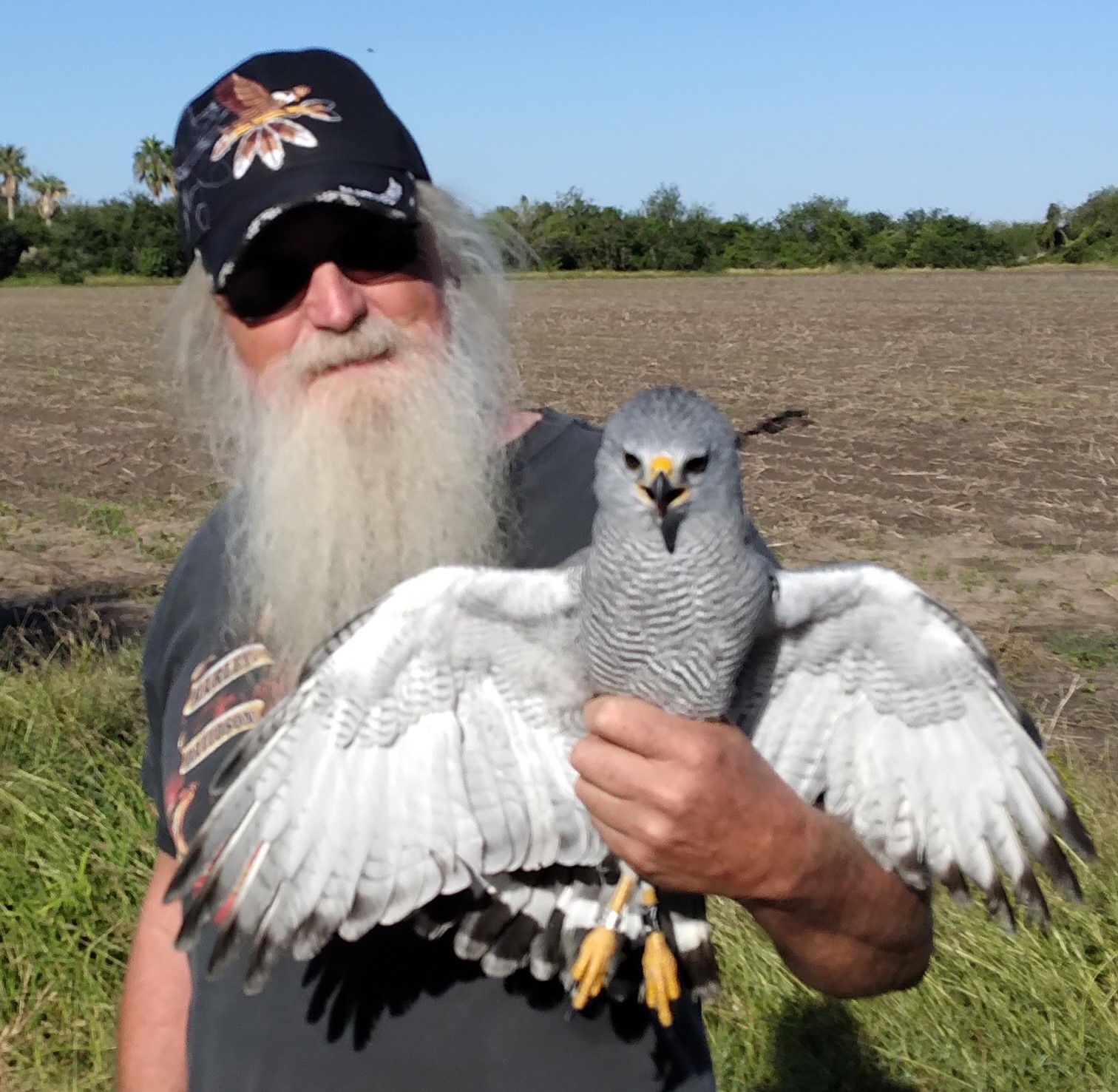by Chuck Cornell

I learn something new every time I accompany Bill for raptor banding. Here’s a few things that are not always known about raptors and a couple of truths about banding in the Rio Grande Valley.
- Female raptors are larger than males. This is noticeable when you see a pair together. When banding, weight and measurements are used to determine the sex.
- White-tailed Hawks take four years to achieve their adult plumage. They go from juvenile to basic two and thenbasic three with each plumage being different. Chuck with banded Gray Hawk– photo by Bill Clark
- Harris’s Hawks hunt cooperatively in groups of three to seven. Not all do this but certain ones do. When the female is nesting the male or a helper will bring her food to the nest. They will also bring food to the babies, but there the female may meet them away from the nest and carry the food herself to feed the youngsters.
- Juvenile Red-tailed Hawks do not have a red tail.
- Juvenile Gray Hawks are not gray.
- Although they arrive in September or October, Kestrels will not come to the traps as long as they have an ample supply of bugs to eat. It’s usually January that the cold drives them to go after mice and other prey.
- When using a dove as the lure for Harris’s Hawks, only the females go after them. The males ignore the dove and will go after the other traps containing mice, sparrows or gerbils.
- Many of the hawks seen here are winter only visitors and don’t breed here. These include, but are not limited, to Kestrels, Red-tailed Hawks, Swainson’s Hawks, Ferruginous Hawks and Broad-winged Hawks.
Thanks, Chuck! I learned some stuff. High information density in this post!
I really appreciate this information based on your field experienes here in the RGV. That’s fascinating that only the females will go after the dove. Thank you, Chuck.